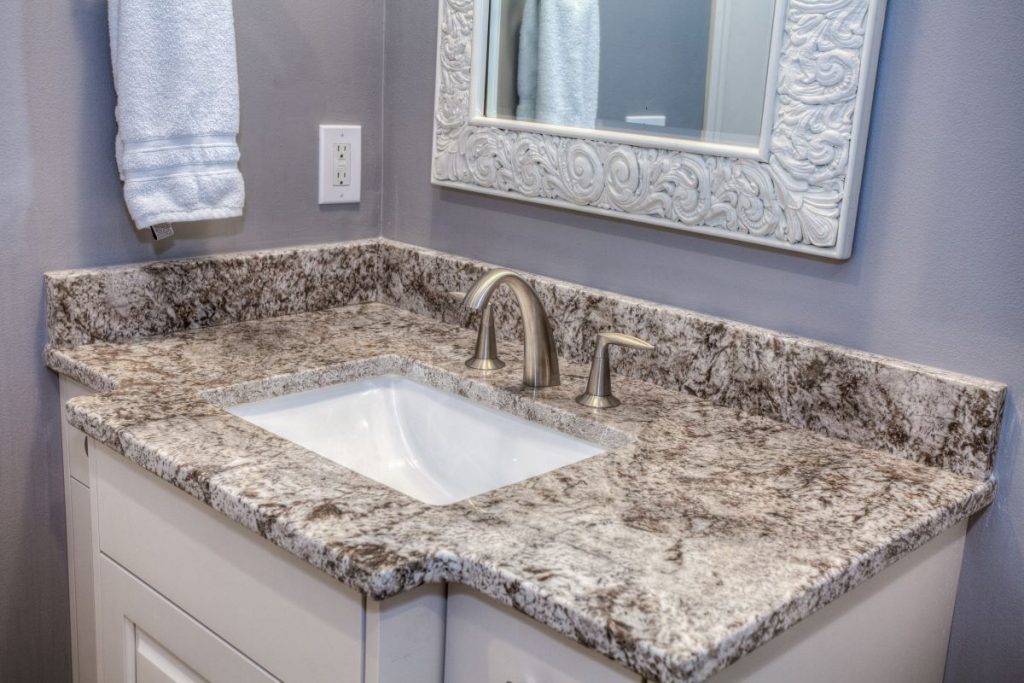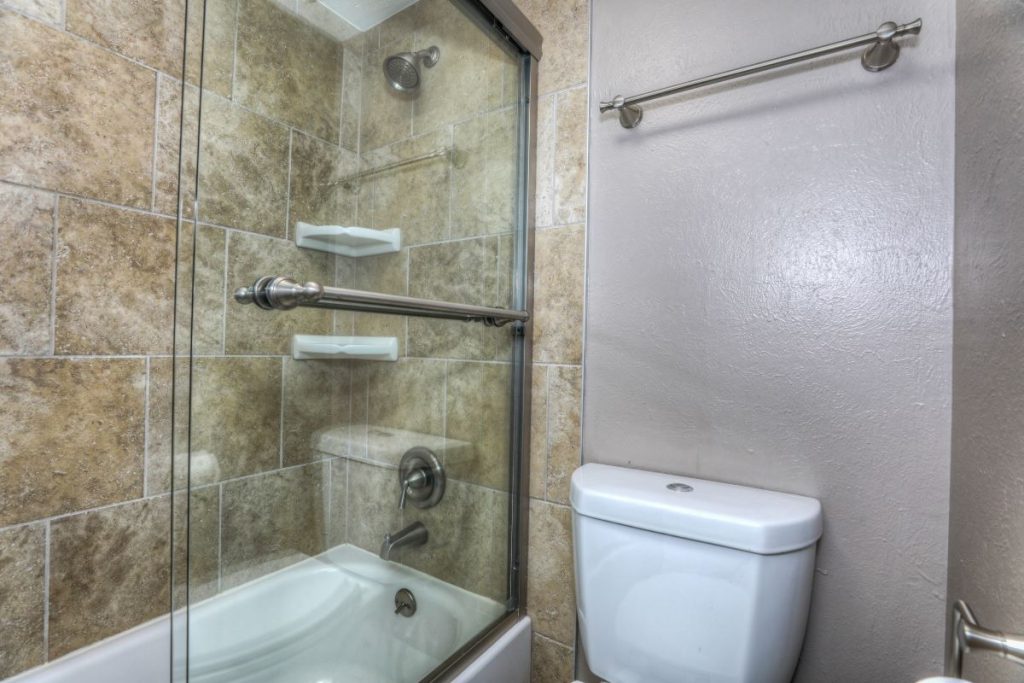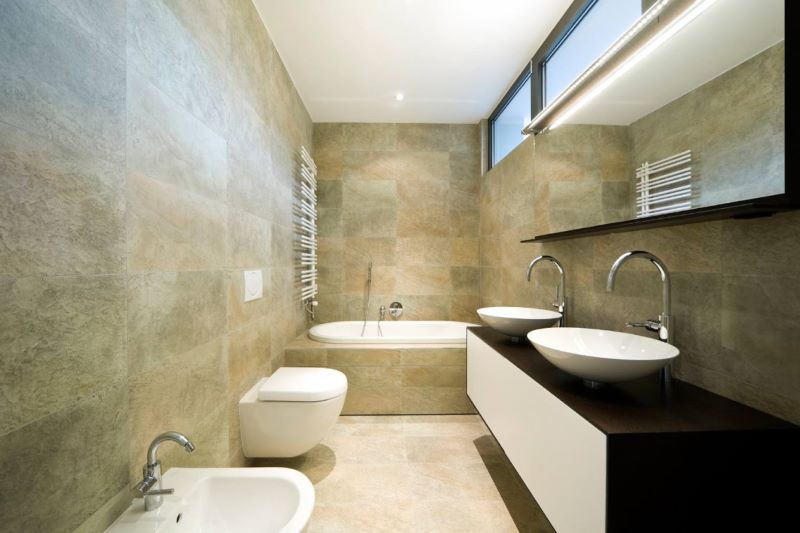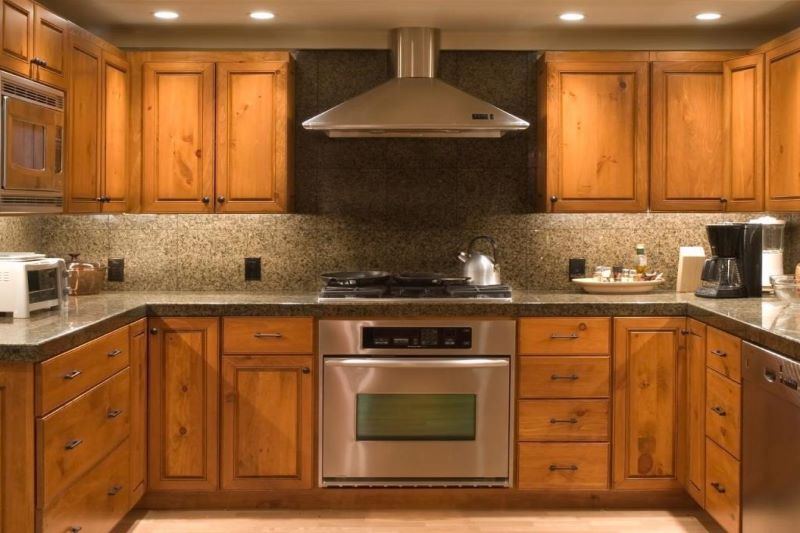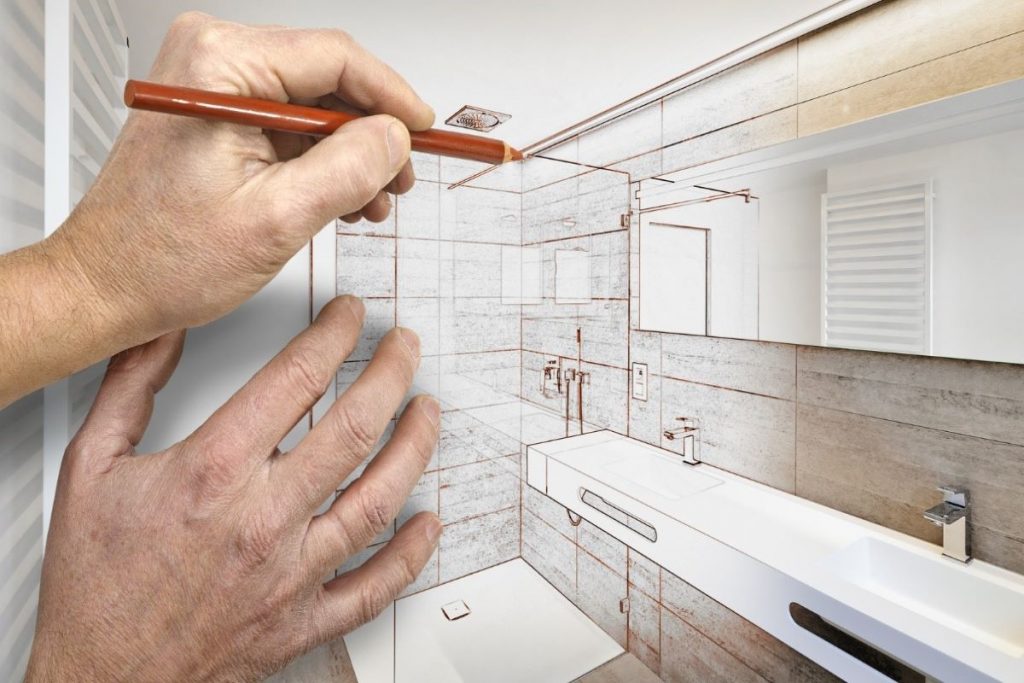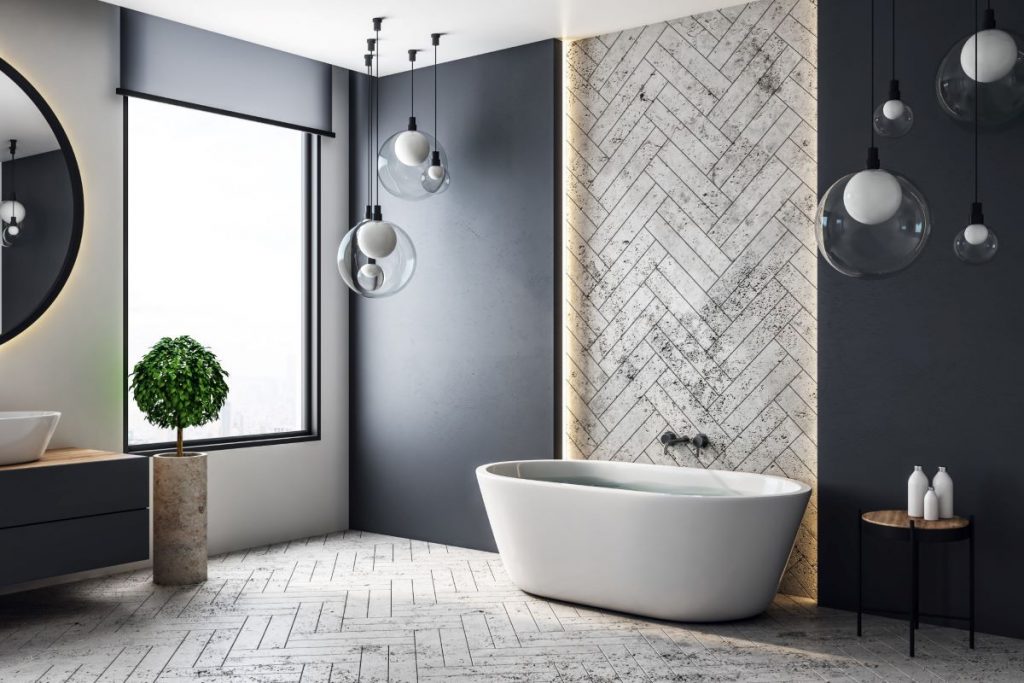Table of Contents
Move over kitchens…the bathroom has become the most popular room to renovate in the home. Bathrooms now make up 81% of home improvement projects.
For most homeowners, this means working with smaller design spaces. Yet, being limited in space doesn’t mean you need to sacrifice style.
Here are 6 small bathroom ideas for creative design inspiration.
1. Pick the Right Color Palette
Your color palette is an essential part of the design for your small bathroom remodel ideas. Brighter colors help to make a small space feel larger. It helps to paint walls in neutral colors, like white, cream, light grey, or blue.
Then you can focus on an accent color that complements the entire room while adding a bit of contrast. Black or copper are great accent choices for hardware and other fixtures.
Be sure to consider the color and materials for countertops, flooring, and cabinets. Tile and vinyl are the most popular choice for bathroom floors, depending on your budget.
Both options offer a range of colors and textures for creating a unique look. But these materials should blend well with the other elements in your bathroom.
2. Pay Attention to Pattern Designs
Patterns from flooring, walls, and countertops help add style to your bathroom. Yet, they can easily overwhelm a small-sized bathroom space. Larger-styled patterns tend to make your space seem bigger than it is.
A patterned floor will pair best with walls and counters that are more simple in design. When going bold with your wall color, it’s best to pair it with neutral flooring.
These techniques keep a smaller space from looking too busy. It’s also easier on the eyes to use only one material for all flooring.
Wallpaper is trending in bathrooms again. For a smaller space, consider a half-wall design.
This breaks up the pattern a bit, helping the room feel larger. Then you can install wainscotting or a backsplash for the other half of the wall design.
3. Wow with Windows
Natural lighting helps to brighten up a cramped or dark space. This means windows can enhance small bathrooms in a big way.
Freestanding tubs are one of the top bathroom trends this year. If you have space for one, it helps to add a big window near the tub area. This will help give the illusion of a larger space.
Adding a skylight to the ceiling is another idea. This is ideal when you don’t have much wall space for adding windows.
4. Use Lighting for Function and Style
Lighting fixtures not only add style to your bathroom space. They are an important feature for making a small space feel bright enough. It’s best to include both ambient and task lighting in small bathroom designs.
If you have space, hang a nice light fixture above a mirror. You can also flank the mirror with small wall sconces. Using up-lighting on your ceiling will make the room seem taller.
Make sure lighting fixtures don’t overwhelm the space. They should make a statement without being too large or bulky.
Another tip is to use a larger-sized mirror to help reflect more light. This trick makes the room feel more spacious than it is.
The same goes for using clear glass doors for your shower. This avoids having a barrier in your bathroom space.
5. Boost Storage Space in the Bathroom
Only 22% of homeowners increase the size of their bathrooms when renovating. That means both homeowners and new home buyers need to find creative ways to save on space. These small bathroom ideas work to boost storage in an original-size bathroom design.
Floor-to-ceiling cabinets are great for bathroom storage. Yet, they are not always possible in smaller spaces. Certain organization techniques work to help reduce clutter in other ways.
Woven baskets are perfect for holding toiletries, towels, and bath supplies. They also add texture and color to the room.
Other easy small master bathroom ideas include placing a small tray on the top of your toilet. You can also install a simple ledge over your sink for an organizational boost.
Make use of wall space with built-in shelving and towel racks. Using an old refurbished ladder for a towel rack is a creative idea.
A small stool or side chair will amp up surface space. Use it to hold a candle, book, or plant. Plants are great for improving air quality in a small place and adding a pop of color.
Some homeowners prefer the look of a pedestal or floating sink instead of cabinets. Others like to use a small table to replace their bathroom vanity. These storage ideas work well when you don’t have space for cabinet storage or a linen closet.
Another tip is to install built-in alcoves inside the shower. These features are great for holding shampoo, conditioner, and soaps. This looks much nicer than a shower caddy or using the shower floor to hold items.
6. Save on Sink and Counter Space
It’s best to go minimal with decor and toiletries in a small bathroom. This tip makes counters look less cluttered.
Installing hangers for hand towels is an easy way to maximize counter space. Longer-sized sinks offer more counter area for bathroom designs for small spaces. This is also ideal when you want extra space without a double basin.
For single-sized vanities, a smaller oval sink may be best. This sink style takes up less space than a rectangular or square one. A corner sink may even allow for better movement and more space in the bathroom.
Small Bathroom Ideas for a Stylish and Functional Design
These small bathroom ideas will help to combine style and function in your home. Transform smaller spaces with the right color palette, lighting techniques, and storage features.
Looking for more inspiration on your next home renovation project? Check out the home improvement section of our blog for all the latest tips and trends.
The Definitive Guide to Bathroom Remodeling
Before proceeding with any repairs or renovations in your bathroom, take a moment to read this guide. We’ve gathered information on contractors, materials, and tools to assist you with your checklist and calculations.
Whether you’re looking for a budget-friendly bathroom remodel or a luxurious upgrade that adds value to your home, this guide is filled with tips and advice on selecting materials, hiring professionals, and achieving your dream bathroom. You’ll also find helpful hints on how to tackle repairs on your own.
Checklist
- Evaluate your current bathroom and identify what you want to change or improve.
- Seek inspiration by browsing bathroom remodeling images or visiting showrooms.
- Assess your budget using our bathroom remodeling tips and ideas to avoid unwanted loans.
- Don’t hesitate to hire professionals who can meet your needs and expectations – we’ll show you how to choose the right ones.
- Ensure you work with a reputable company that takes responsibility for their work.
- Prepare yourself for the remodeling process and learn how to manage stress.
Bathroom Renovation: Essential Materials and Tools
- Storage options include cabinets, counters, countertops, vanities, and shelves
- Sink options
- Faucet choices
- Materials for shower and bathtub
- Types of toilets available
- Ventilation options
- Lighting options for the bathroom
- Wall and flooring materials for a bathroom renovation
- Door and window choices for a bathroom renovation.
Consider Your Desires: A Bathroom Remodel Questionnaire
Before embarking on your bathroom renovation journey, it’s important to identify your desires and needs. Ask yourself the following questions:
- What do you like about your current bathroom?
- What changes do you want to make?
- How do you envision your dream bathroom?
- What color scheme do you prefer?
- How many people will regularly use the bathroom?
- How many people will use the bathroom at the same time?
- Which areas should be private, and which can be shared?
- Will you have guests using the bathroom?
- What are the age and health conditions of those who will use the bathroom?
- Do you require a bathroom that is accessible to individuals with disabilities?
- Do you want a separate shower and bathtub?
- Will a single-person shower suffice?
- Do you want to separate the toilet from the bathroom area?
By identifying the specific activities that will take place in your bathroom, you can choose the appropriate furniture and accessories to make the space more functional. Consider your needs for hair and body washing (tub or shower), teeth brushing and shaving (vanity, shower, or bath), lotion application (vanity, shower, or bath), and washing children or pets. This analysis will help you select the appropriate bathroom items and accessories and estimate the total cost of your bathroom remodel.
Designing Your Bathroom Remodel: Space Planning and Safety Tips
When planning a bathroom remodel, it’s important to carefully consider the layout, whether you’re a beginner or an experienced homeowner. Here are some basic options:
10×5
This is a budget-friendly option for a small, three-quarter bathroom without a tub. Plumbing installation is simplified, and you won’t need to purchase as many materials. However, it’s best to consult with a professional if you lack experience in bathroom remodeling.
10×8
This full bathroom remodel includes a bath, shower, and separate water closet space. It’s a good choice for families with multiple members and pets and allows for plenty of storage and vanity space. You can also add hooks, shelves, and cabinets for additional storage.
9×11
This upscale bathroom remodel is ideal for those willing to invest more money. You can install a large bath and spacious shower, and opt for a walk-in shower without a door. There’s ample space for vanities and accessories.
10×12
This bathroom has it all, with a separate toilet area, bathtub, large shower, and double vanity.
Regardless of which layout you choose, it’s important to consider comfort, safety, and functionality. There are certain standards to follow, such as a minimum door width of 32 inches, minimum shower size of 36×36 inches, and minimum faucet and showerhead height. Vanity height should be around 30 inches, with sink placement 16 inches from the wall and the medicine cabinet at least 8 inches above the sink. For those with specific needs, professional help may be required.
To ensure safety, consider slip-resistant flooring, a tub platform, shatterproof shower doors, temperature-control valves, handgrips throughout the bathroom, and cabinet locks for children.
Tips for Setting Your Bathroom Remodeling Budget
Before you start your bathroom renovation project, it’s important to set a budget and stick to it. Don’t make the mistake of only focusing on color schemes and furniture. Instead, take the time to estimate your budget and consider whether you plan to stay in your home for the long term or if you may sell it in the future.
If you plan to sell your home, research the prices of homes in your neighborhood to ensure that your bathroom renovation budget aligns with the market. Investing too much in a remodel may not yield a satisfactory return if your area is not popular among buyers.
On the other hand, if you plan to stay in your home, allocate your budget towards high-quality materials and professional help to create your dream bathroom. Take the time to analyze your budget, including any outstanding debts and your income, to determine the maximum amount you can spend per month on the project.
Remember, unexpected issues and expenses may arise during the remodeling process, so it’s important to set aside an additional 25% of your budget to accommodate these unforeseen costs. Consider visiting bathroom remodeling stores and showrooms for additional guidance and inspiration within your budget.
Tips for Bathroom Remodeling on a Budget
- Stay focused on your goals and avoid splurging on unnecessary items.
- Look for professionals who can suggest cost-effective ideas to help you achieve what you want within your budget.
- Keep your renovation simple by avoiding major structural changes or decorative elements that can quickly add up in cost.
- Check customer feedback and ensure your contractor can meet the project deadline.
- Plan ahead and purchase the necessary tools and materials before starting the project to save time and money.
- Choose stock items over custom ones and take advantage of promotions and sales, especially at the end of seasons or online deals.
- Start with necessary alterations such as plumbing and electrical work, then move on to tiling and flooring.
- Focus on investing in essential elements such as plumbing, appliances, and cabinets rather than accessories and lighting fixtures.
- Consider doing some of the work yourself to save money on labor costs. Look up DIY tutorials for painting, tiling, and minor furniture removal.
Trust the Pros
Hiring professionals is crucial for a successful bathroom remodel, especially if it’s your first time. If you’re reading this, you’re likely seeking professional advice and help for your remodeling process. Here are some professionals you may need:
- An architect: responsible for the design
- A designer: responsible for visualizing the project in drawings
- A general contractor: responsible for overseeing the project
- A design-build firm: responsible for handling all of the work mentioned above.
When looking for a contractor, it’s important to ask the right questions to ensure they are trustworthy and reliable. Ask the potential contractor:
- How long have you been in the remodeling business? This will give you an idea of their experience and reputation. Also, ask for their license and insurance certificate.
- How long will it take to complete the project? You need to establish a schedule.
- How do you organize your work? Find out if the contractor works with subcontractors and if there will be a supervisor on-site to manage the project.
- Have you worked on similar projects before? Experience is key.
- Do referrals help your business grow? This will help you understand if the company satisfies its customers.
- Can you provide references and demonstrate your work? A contractor with at least three references and a portfolio can be trusted.
Create an Official Contract
Before starting your bathroom remodel, ensure that you have a written contract that includes the following details:
- The contractor’s ID, license number, and contact information.
- A complete list of bathroom remodeling tools and materials, including brand names, styles, and colors.
- A comprehensive description of the bathroom remodeling steps, including the cleaning process (if required).
- A timeline (approximate) for completion.
- The cost and payment process.
- The warranty.
- An arbitration clause.
If you need to make changes to the contract during the remodeling process, discuss the matter with your contractor and include the modifications in writing in the contract.
Note: If you decide not to hire a contractor and prefer to do the work yourself or with the help of a professional, be sure to visit your local permitting office. Failure to obtain a permit for your bathroom remodel could result in a fine if you replace a sink or remove a window without permission.
Preparing Yourself for Bathroom Renovation
Bathroom renovation can be a stressful experience, but with proper planning and preparation, you can make it more manageable. Here are some tips to help you get through it:
- Prepare yourself emotionally. Understand that there may be unpleasant surprises and setbacks, but keeping a clear vision of the end result can help you stay focused.
- Set clear rules for the job site. Discuss the workers’ schedule, rules on the mess, tool storage, music, lunch breaks, and other important details.
- Stay organized and on schedule. Plan everything in advance and purchase necessary materials beforehand to avoid delays.
- Control dust and debris. Use sheets, screens, curtains, and duct tape to prevent dust from spreading throughout your home.
- Keep children safe. Make sure they stay away from the job site and have activities planned during the renovation process.
- Ensure that you have access to a working toilet and a place to wash.
- Hang a message board next to the job site to communicate important information.
- Protect valuable items by moving them away from the renovation area.
- Find a safe place to store remodeling materials and tools.
Bonus tip: Create a punch list of incomplete tasks and necessary corrections after the renovation is complete. A reliable contractor should be willing to help you with these tasks.
Materials and Tools for Bathroom Remodeling
Cabinetry and Storage
There are two types of bathroom cabinets – framed and frameless. Hardware and fixtures can be visible or hidden, depending on your preference for a traditional or contemporary style. Custom bathroom cabinets cost more than stock cabinets, but semi-custom cabinets offer more variety in materials and sizes without breaking your budget. When selecting a vanity, ensure that it has enough storage for your towels and makeup, and add wire shelves, hooks, and towel holders. Consider a medicine cabinet, which can be fixed on the wall’s surface or recessed to reduce clutter and simplify cleaning.
Walls, Floors, and Countertops
Bathroom countertops can be made of natural stone, cement or concrete, quartz, laminate, cultured marble, glazed porcelain or ceramic tiles, or glass. Flooring options include vinyl, stone, hardwood, engineered wood, and laminate. Walls can be covered with tiles, paint, tough vinyl covers, or plastic panels. To achieve an elegant and stylish look for your sink or vanity, consider using a sheet of cultured marble rather than tiling.
Sinks
Bathroom sinks come in various types, such as vanities, consoles, pedestals, vessel sinks, and wall-mount sinks. Vanities are the most practical and affordable option, while consoles are matched with the bathroom cabinetry, pedestals are suitable for small spaces, and wall-mount sinks offer ample storage space underneath. Sink materials range from ceramic with enamel coating (affordable but fragile) to fiberglass (long-lasting but prone to scratches) and stainless steel (durable and cost-effective).
Bathtubs
Bathtubs can be made of cast iron, composite, acrylic, natural and cultured marble, fiberglass, or porcelain. The bathtub can stand alone or be installed with fixtures and be under-mount or on a platform depending on your aesthetic preference.
Lighting and Ventilation
Efficient lighting and ventilation are essential for any bathroom remodeling project. Task lighting should be installed in areas where grooming activities take place, such as the shower, tub, and vanities. Ambient lighting can be placed in the center of the ceiling, and accent lighting can be added to attract attention to specific features. A powerful ventilation system will keep the air fresh and prevent excessive humidity.
Common Bathroom Remodeling Mistakes to Avoid
When it comes to remodeling your bathroom, there are several mistakes to avoid. One is moving the plumbing, as it can be costly to replace existing fixtures. Another is not having a solid plan in place, which can lead to haphazard renovations and accidental damage. It’s also important to hire a contractor who agrees to a fixed price in the contract and to prioritize safety and accessibility over aesthetics when choosing accessories. Beware of low-quality building companies that may damage even top-notch materials, and make sure to set aside a budget reserve of around 25% of the project cost. Finally, be sure to choose durable, water-resistant materials and invest in proper ventilation to protect your investment.
Common Inquiries About Bathroom Remodeling
Looking to renovate your bathroom? Here are some common questions that homeowners ask:
How much does a bathroom remodeling project cost?
The cost of bathroom remodeling varies depending on your desired style and budget. On average, homeowners spend more than $5,000 for a typical renovation, while a minimum budget of $3,500 can cover basic upgrades. The total cost can go up to $15,000 depending on the accessories, furniture, and appliances you choose. It’s best to consult with professionals to estimate your budget based on your needs, bathroom size, and monthly income.
When is the best time to start a bathroom remodeling project?
Start the remodeling project once you have a project plan and budget in place. If you want to avoid delays, choose to do the project in winter or summer when it’s not a peak season for contractors.
How long does bathroom remodeling take?
A complete remodeling of your bathroom including the replacement of furniture, appliances, plumbing, and electrical systems may take more than a month and a half, usually around 4-5 weeks. Some processes cannot be done simultaneously, and there may be days of preparation when the bathroom looks like a complete mess. If you need to demolish walls and floors, expect to wait even longer.
Will a bathroom remodeling project add value to my home?
A bathroom remodel can add value to your home if you choose practical, usable elements like new tiling, better lighting, a double vanity or sink, a seat in the shower, additional storage options, or a jacuzzi. A well-designed bathroom can attract potential buyers and increase your home’s overall value.
Who can remodel my bathroom?
You can either do the remodeling project yourself or hire a professional contractor. While doing it yourself may save you money, hiring a professional can ensure high-quality work and add more value to your home. A professional can handle mistakes and potential drawbacks that may arise during the renovation process, and everything will be estimated beforehand to avoid stretching your budget. However, there are still some tasks that you can do yourself, such as buying fixtures, removing furniture and appliances, and repainting or retiling.
Conclusion
Bathroom remodeling can be a daunting task, but with proper planning and execution, it can add significant value to your home. It’s important to avoid common mistakes such as not having a clear plan, hiring low-quality building companies, or not having a budget in reserve. By consulting with professionals and taking your time, you can create a practical, safe, and elegant bathroom that will benefit you and potential future buyers of your home.

